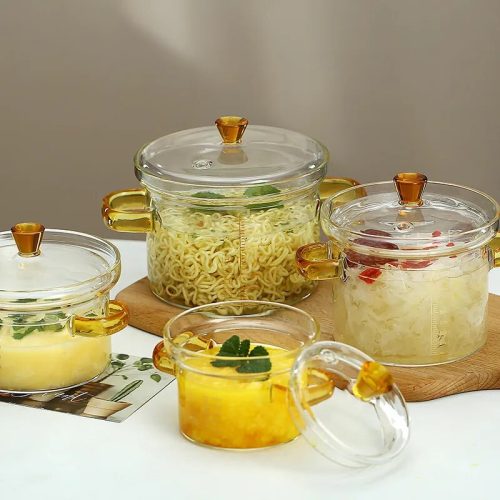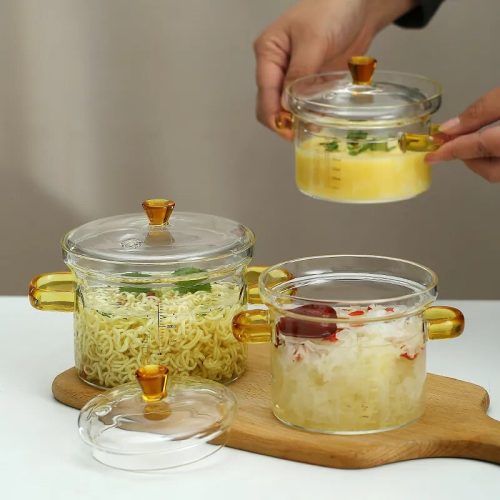Choosing the right cookware is a pivotal decision in every kitchen. With an abundance of options available, it’s essential to make an informed choice. In this article, we’ll conduct a comprehensive comparison between Borosilicate glass cookware and traditional cookware to help you decide which is the better fit for your culinary needs.
Heat Resistance
- Borosilicate Glass Cookware: Borosilicate glass is known for its exceptional heat resistance. It can handle extreme temperature fluctuations without shattering, making it ideal for both stovetop and oven use. This heat resistance is one of its standout features.
- Traditional Cookware: Traditional cookware, such as stainless steel or cast iron, may not possess the same heat resistance as Borosilicate glass. They may be prone to warping or discoloration when exposed to rapid temperature changes.
Non-Reactive Properties
- Borosilicate Glass Cookware: Borosilicate glass is non-reactive, which means it won’t absorb flavors, odors, or stains from your dishes. This property ensures that the flavors of your food remain true, and it’s an excellent choice for dishes with strong or aromatic ingredients.
- Traditional Cookware: Traditional cookware, especially porous materials like cast iron, can absorb and retain flavors over time. This can affect the taste of your dishes, especially if you frequently cook with strongly flavored ingredients.
Ease of Cleaning
- Borosilicate Glass Cookware: Cleaning Borosilicate glass cookware is a breeze. It’s dishwasher safe and can also be easily cleaned by hand with warm, soapy water. Its smooth surface doesn’t trap food residues.
- Traditional Cookware: The maintenance of traditional cookware varies depending on the material. While some, like stainless steel, are relatively easy to clean, others, such as cast iron, require special care to prevent rust and maintain their seasoning.
Versatility
- Borosilicate Glass Cookware: Borosilicate glass cookware is versatile, available in various forms, including baking dishes, casserole pans, measuring cups, and storage containers. It’s suitable for a wide range of cooking tasks and transitions seamlessly from one cooking phase to the next.
- Traditional Cookware: Traditional cookware comes in different forms and materials, each with its own set of benefits and limitations. While cast iron is excellent for searing and retains heat well, stainless steel offers a non-reactive surface. The choice of traditional cookware depends on your specific cooking needs.
In conclusion, the comparison between Borosilicate glass cookware and traditional cookware reveals that both have their merits. Borosilicate glass shines in terms of heat resistance, non-reactive properties, and ease of cleaning, making it an attractive choice for many. Traditional cookware, on the other hand, offers a wide array of options with unique advantages tailored to specific cooking techniques.
Your decision should be based on your cooking style and preferences. For those who value versatility and ease of use, Borosilicate glass cookware is a modern and practical choice. If you have a penchant for specific cooking techniques and are willing to invest time in maintenance, traditional cookware can also be a valuable addition to your kitchen. Ultimately, it’s all about finding the right balance between your culinary needs and the features of your chosen cookware.


